

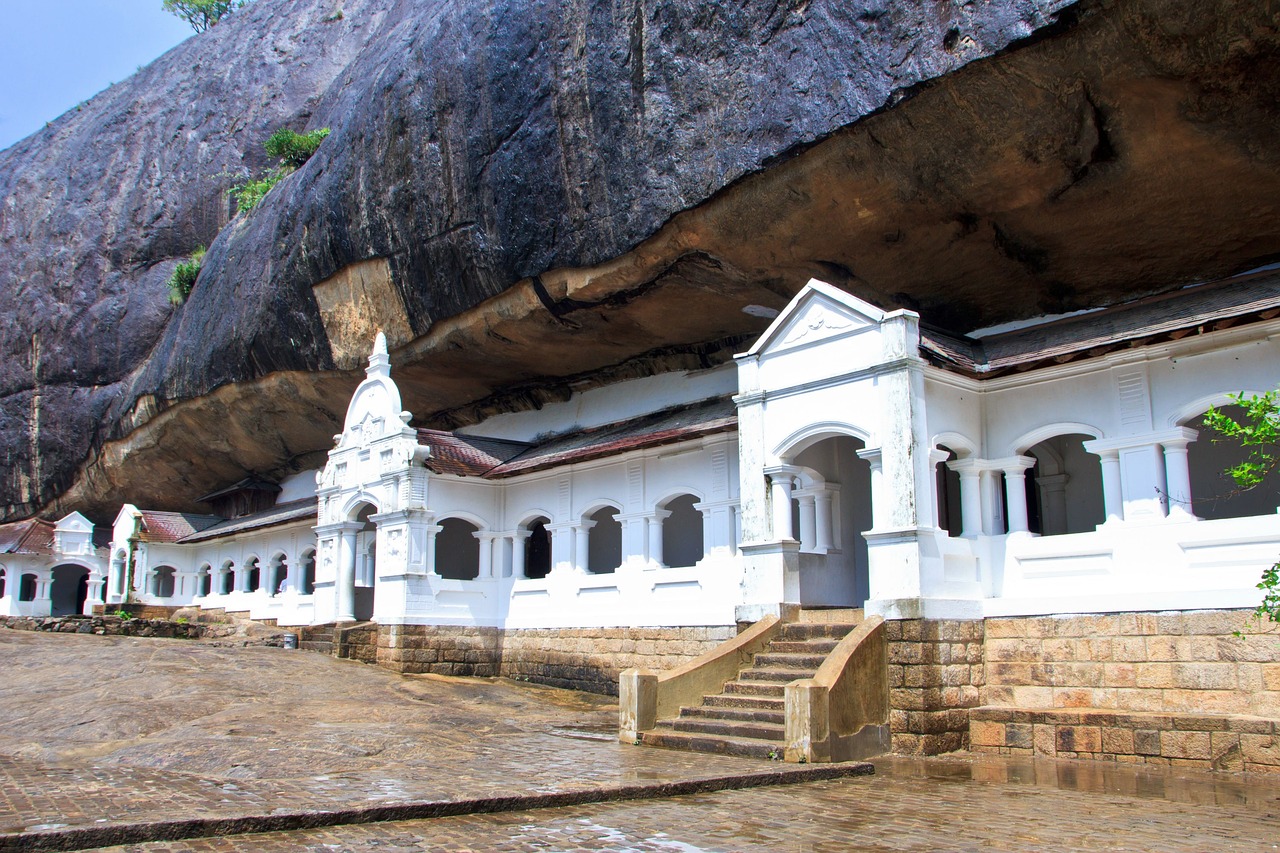
Nestled amidst the lush greenery of Sri Lanka's Cultural Triangle lies a hidden gem that beckons travelers from across the globe - the Dambulla Cave Temple. This ancient marvel, also known as the Golden Temple of Dambulla, is a testament to the island nation's rich cultural heritage and spiritual significance. Join us on a journey of discovery as we unveil the mysteries and wonders of this UNESCO World Heritage Site.
The Dambulla Cave Temple, with its labyrinthine caves and stunning rock paintings, is an archaeological wonder that dates back over two millennia. Legend has it that King Valagamba sought refuge in these caves during a tumultuous period in Sri Lanka's history. To show his gratitude after reclaiming his throne, he transformed these natural caves into a place of worship and sanctuary, paving the way for centuries of religious devotion.
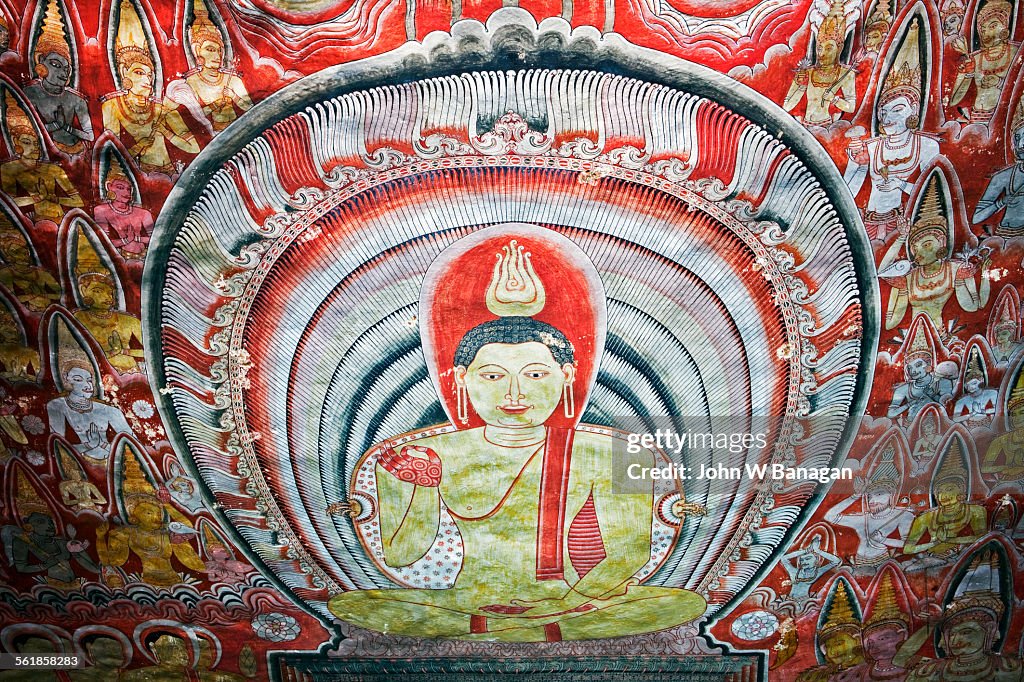
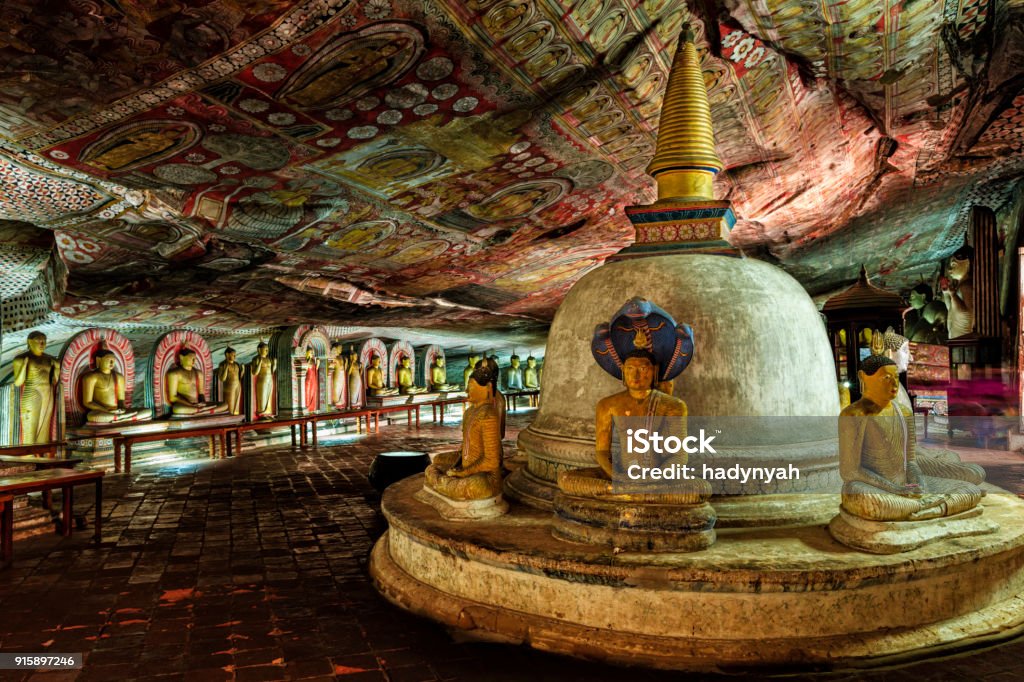
The temple complex comprises five caves, each with its own unique character and religious significance. As you step into the cool darkness of the caves, you'll be transported to a world of awe-inspiring beauty and spirituality.
01. Cave of the Divine King (Devaraja Viharaya):
The first cave sets the tone for the entire complex, featuring a 15-meter-long reclining Buddha statue, adorned with vibrant frescoes that depict the life of Lord Buddha. The tranquility within this cave is palpable, inviting visitors to contemplate the teachings of Buddhism.
02. Cave of the Great Kings (Maharaja Viharaya):
The second cave houses a grand collection of Buddha statues, including a magnificent standing Buddha. The cave's ceiling is adorned with intricate patterns and vibrant paintings, showcasing the skill and artistry of ancient Sri Lankan craftsmen.
03. Cave of the Great New Monastery (Maha Alut Viharaya):
This cave is a more recent addition, featuring a stunning reclining Buddha and an array of modern paintings illustrating Buddhist stories and teachings. It offers a fascinating blend of ancient and contemporary religious artistry.
04. Cave of the Spiritual King (Pachima Viharaya):
The fourth cave houses another reclining Buddha, surrounded by colorful frescoes depicting the final moments of Lord Buddha's life. The serenity of this cave is palpable, making it a perfect spot for meditation and introspection.
05. Cave of the Divine King (Devana Alut Viharaya):
The fifth and final cave is a smaller, yet equally captivating, space adorned with various Buddha statues. It is less visited than the other caves, offering a quieter and more intimate experience.

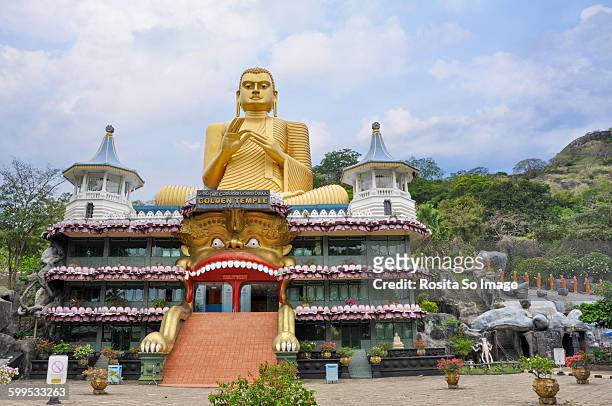
One cannot help but be captivated by the intricate frescoes that adorn the cave ceilings and walls. These paintings, created using natural pigments, depict not only Buddhist stories but also scenes from daily life in ancient Sri Lanka. The vivid colors and attention to detail have stood the test of time, providing a glimpse into the artistic brilliance of the island's early civilizations.
Getting There
Dambulla is conveniently located in Sri Lanka's Cultural Triangle, making it accessible from major cities like Colombo, Kandy, and Anuradhapura. You can reach Dambulla by bus, train, or taxi, and the temple is just a short tuk-tuk ride away from the town center.

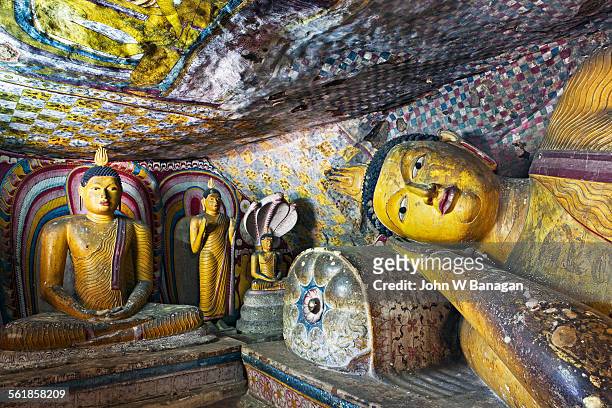
In Conclusion
The Dambulla Cave Temple is not only a place of worship but also a testament to the enduring spirit of Sri Lanka's cultural and religious heritage. Its remarkable caves, exquisite frescoes, and serene atmosphere make it a must-visit destination for travelers seeking a deeper understanding of the island's history and spirituality. As you explore the depths of these ancient caves, you'll embark on a journey that transcends time, leaving you with a profound sense of awe and wonder.
Copyright © Traveylo. All Rights Reserved.
Designed by Virtualpensar Pvt Ltd